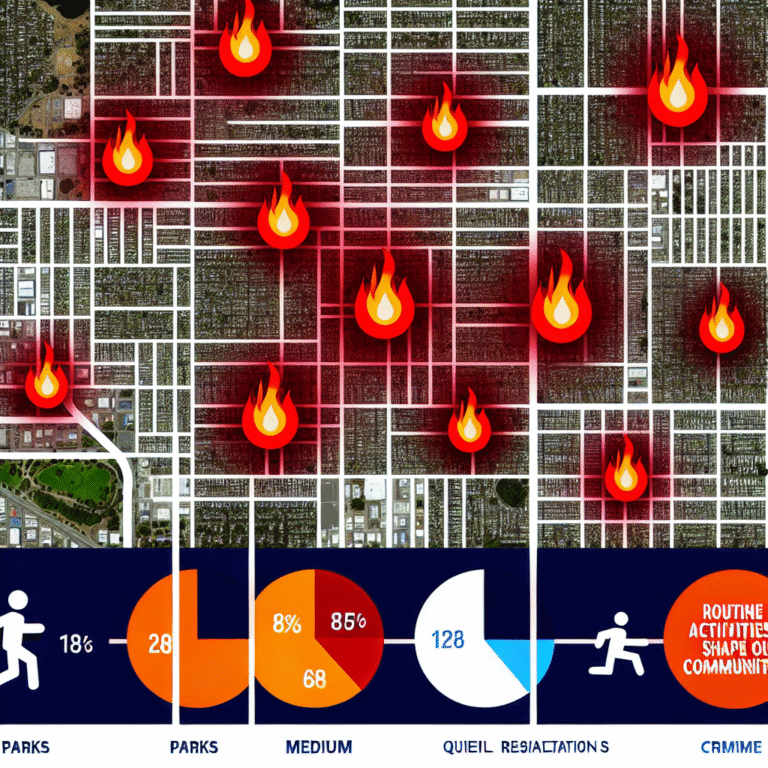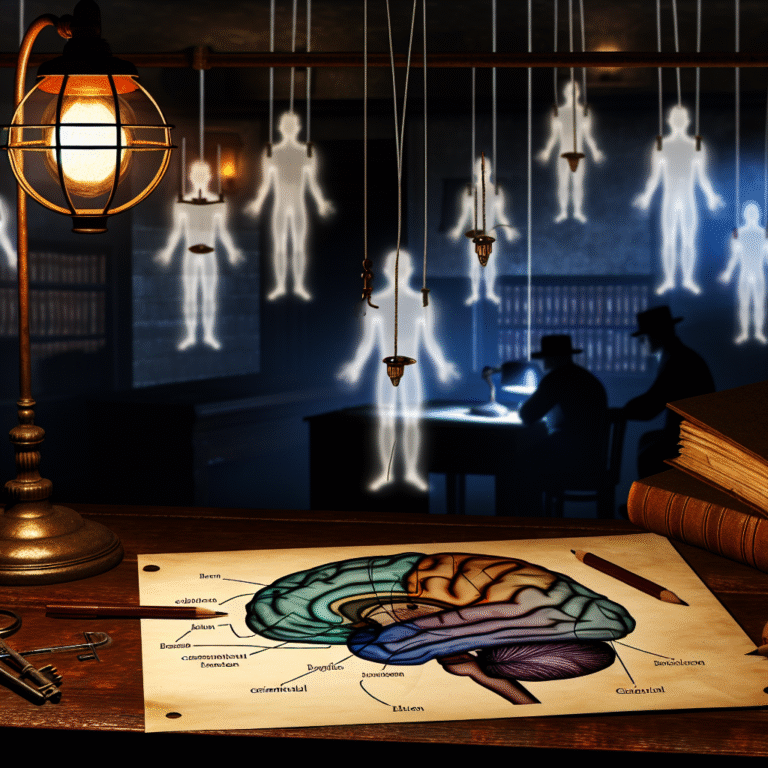
Is antisocial personality disorder something you’re born with or learn? This debate has been going on for a long time. The terms psychopathy and sociopathy are often mixed up. But they really mean different things in the world of personality disorders.
Both psychopathy and sociopathy show a lack of care for others and a disregard for rules. But, dark triad psychology points out that they have different roots and ways of showing up. Knowing these differences is key to making better tests and treatments.
Key Takeaways
- Psychopathy and sociopathy are different kinds of antisocial personality disorder.
- Even though they’re often called the same thing, they have different causes.
- Dark triad psychology helps us see how they differ.
- It’s important to understand these differences for diagnosis and treatment.
- The debate about where these disorders come from is ongoing.
Understanding Antisocial Personality Disorders
Antisocial personality disorder (ASPD) is a complex issue. It involves a disregard for others, lack of empathy, and impulsivity. Each person with ASPD shows it differently, making it hard to diagnose and treat.
The Spectrum of Antisocial Behavior
ASPD ranges from mild traits to severe disorders. This range helps us see how different and severe the disorder can be.
From Mild Traits to Clinical Disorders
Mild traits might include occasional impulsiveness or not caring about others’ feelings. But, clinical disorders show a constant disregard for social norms and others’ rights. The shift from traits to disorder is influenced by genetics, environment, and brain function.
Impact on Individual Functioning
ASPD deeply affects a person’s life. It can harm personal relationships, career success, and overall happiness. People with ASPD might act manipulatively, show no empathy, and be prone to impulsive and aggressive behavior. Understanding these aspects is key to managing and treating ASPD.

Looking at the spectrum of antisocial behavior helps us grasp ASPD’s complexities. This understanding aids in creating better ways to diagnose and treat it.
Historical Evolution of the Terms
It’s important to know the history of psychopathy and sociopathy to understand them today. Their evolution shows how psychiatric ideas, research, and society have changed together.
Origins of “Psychopathy” in Psychiatric Literature
The idea of psychopathy started in early psychiatric writings. It described people who acted out without being psychotic or neurotic. Cleckley’s book “The Mask of Sanity,” changed how we see psychopathy today.
Cleckley’s Influence and “The Mask of Sanity”
Cleckley’s work introduced the “psychopathic personality.” This person is charming but lacks empathy and manipulates others. His work showed psychopathy is different from other mental health issues.
Development of “Sociopathy” as a Concept
The term sociopathy came up as a different way to talk about psychopathy. Some thought it was more about social and environmental factors than personality.
Shift Toward Social Causation Theories
The idea of sociopathy led to a focus on why people act out. It’s believed that society and upbringing play big roles, not just genetics. Key points include:
- Seeing how environment shapes behavior
- More attention on how upbringing and learning affect us
- Thinking about how society affects the development of bad behavior

The history of psychopathy and sociopathy shows how complex these disorders are. It’s clear we need to look at both biology and society to understand them fully.
Clinical Definitions and Diagnostic Frameworks
Understanding ASPD and psychopathy involves several key frameworks. These frameworks are essential for accurate diagnosis and treatment.
DSM-5 Classification and ASPD
The DSM-5 sets a standard for diagnosing ASPD. It focuses on a pattern of disregard for others and lack of empathy.
Diagnostic Criteria and Limitations
The DSM-5 looks for a history of conduct disorder and antisocial behavior in ASPD. Yet, some say these criteria don’t fully capture psychopathy’s complexity.
ICD-11 Perspective on Dissocial Personality Disorders
The ICD-11 views dissocial personality disorder through the lens of severe antisocial behavior. It offers a detailed look at the disorder.
The Role of the PCL-R in Assessment
The PCL-R is a key tool for assessing psychopathy. It examines interpersonal, affective, and behavioral traits.
Factor Structure and Clinical Utility
The PCL-R’s structure helps assess psychopathy deeply. It reveals underlying traits and behaviors.

| Diagnostic Framework | Key Features | Clinical Utility |
|---|---|---|
| DSM-5 | Standardized criteria for ASPD, emphasis on antisocial behavior | Widely used in clinical practice, facilitates diagnosis |
| ICD-11 | Focus on severity of dissocial personality disorder | Offers a nuanced view, useful for treatment planning |
| PCL-R | Assessment of psychopathy through interpersonal, affective, and behavioral traits | Highly regarded for its reliability and validity in forensic settings |
Psychopathy vs Sociopathy: Core Differences
Psychopathy and sociopathy are often confused, but they are different. They both fall under antisocial personality disorders. Their causes and how they show up are key to understanding their differences.
Origin: Nature vs Nurture Debate
The debate on psychopathy and sociopathy’s origins is about nature vs nurture. Studies show that psychopathy has a strong genetic link. People with psychopathic traits often have brain differences. Sociopathy, on the other hand, is thought to be more shaped by environment, like childhood trauma and learning from others.
Emotional Processing Distinctions
Psychopathy and sociopathy also differ in how they handle emotions.
Cold Calculation vs. Hot-Headed Reactivity
People with psychopathy are known for cold calculation. They use manipulation and predatory behavior without feeling emotions. Sociopaths, on the other hand, are known for hot-headed reactivity. They react impulsively with intense emotional outbursts.
Behavioral Pattern Variations
The behaviors of psychopathy and sociopathy also differ.
Planning vs. Impulsivity
Psychopathy is linked to planned and calculated behavior. People with psychopathy plan their actions carefully to reach their goals. Sociopathy, on the other hand, is marked by impulsive behavior. People with sociopathy act on impulse without thinking about the consequences.
Here are the main differences between psychopathy and sociopathy:
- Origin: Psychopathy is more genetically influenced, while sociopathy is more environmentally influenced.
- Emotional Processing: Psychopathy is associated with cold calculation, whereas sociopathy is linked to hot-headed reactivity.
- Behavioral Patterns: Psychopathy involves planned behavior, whereas sociopathy is characterized by impulsivity.
Psychopathy: Defining Characteristics and Traits
Psychopathy is a complex disorder with key features like emotional deficits and manipulative tendencies. It affects how people feel, interact, and behave. Knowing these traits helps us understand psychopathy better.
Affective Features: Shallow Emotions and Lack of Empathy
People with psychopathic traits have shallow emotions and lack empathy. This makes it hard for them to form deep connections with others. Their lack of empathy lets them manipulate others without feeling guilty.
The inability to empathize is a key sign of psychopathy. It sets it apart from other disorders. This trait helps psychopaths act manipulatively without feeling the usual emotional pain.
Interpersonal Traits: Manipulation and Superficial Charm
Psychopaths are skilled at manipulating and using charm superficially. These traits help them influence others for their own benefit. Their charm helps them gain trust and credibility.
The Art of Deception and Impression Management
Psychopaths are experts at deception and managing impressions. They use these skills to control social situations for their advantage. They are good at showing themselves in a positive light, hiding their true intentions.
| Trait | Description | Impact on Behavior |
|---|---|---|
| Superficial Charm | Ability to charm others superficially | Facilitates manipulation and gaining trust |
| Manipulation | Skill in influencing others for personal gain | Leads to exploitation of others |
| Lack of Empathy | Inability to understand or share feelings of others | Enables remorseless behavior |
Behavioral Patterns: Impulsivity and Need for Stimulation
Psychopaths often act impulsively and seek constant stimulation. This can lead to reckless and antisocial behavior. Their impulsivity might cause them to take risks or engage in dangerous activities.
The mix of emotional, interpersonal, and behavioral traits in psychopathy makes it hard to manage or treat. Understanding these traits is key to creating effective strategies for dealing with psychopaths.
Sociopathy: Key Indicators and Behaviors
Sociopathy shows itself through a mix of emotional, social, and behavioral signs. People with sociopathic traits have certain qualities that set them apart.
Emotional Volatility and Reactive Aggression
Sociopathy is known for emotional volatility, leading to reactive aggression. This means they might act out quickly when they feel threatened or stressed.
Triggers and Warning Signs
It’s important to know what triggers and warning signs of reactive aggression are. These can include:
- Perceived slights or disrespect
- Frustration or blocked goals
- Environmental stressors
Social Functioning and Relationship Patterns
People with sociopathy often struggle with social interactions. They have trouble forming lasting, meaningful relationships. Their way of interacting can be manipulative or exploitative.
| Aspect | Characteristics in Sociopathy |
|---|---|
| Emotional Expression | Shallow, labile emotions |
| Relationship Patterns | Manipulative, exploitative |
| Impulsivity | High levels of impulsivity, risk-taking |
Impulsivity and Risk-Taking Behaviors
Impulsivity is a key trait of sociopathy, showing up as risk-taking behaviors. These actions can have big effects, both on the person and those around them.
Disregard for Safety and Consequences
A big part of sociopathy is not caring about safety and consequences. People might do dangerous things without thinking about the outcomes.
Knowing these signs helps us spot and deal with sociopathy in different situations.
Assessment Methods and Psychopathy Tests
Figuring out if someone is a psychopath needs many steps. Experts use different tools and ways to check for psychopathic traits. They look at various signs to see how serious it is.
The Hare Psychopathy Checklist-Revised (PCL-R)
The PCL-R is a top choice for checking for psychopathy. It looks at how someone acts, feels, and behaves. It’s seen as the best tool in the field.
Administration and Scoring
To use the PCL-R, a semi-structured interview is done. They also look at other information. It has 20 items scored on a 3-point scale. This score shows how much psychopathic traits someone has.
Self-Report Measures: PPI-R and LSRP
Other tools like the PPI-R and LSRP are also used. These let people tell about their own actions and feelings. They help in understanding psychopathy better.
Limitations of Current Assessment Tools
Even though these tools are helpful, they have some downsides. They might not always be accurate. This is because of how people answer questions and cultural differences.
Validity Concerns and Cultural Biases
Some people might not answer truthfully, which can lead to wrong results. Also, how psychopathy shows up can change based on culture. This makes it hard to get a clear picture.
Figuring out psychopathy is complex and involves many steps. Tools like the PCL-R and self-report measures give important insights. But, it’s important to remember their limits. As Robert Hare, the PCL-R’s creator, says, “It’s not just about ticking boxes. It’s about really understanding someone’s actions and life.”
“The challenge in assessing psychopathy lies not only in the tools we use but also in our understanding of the construct itself.”
Neurobiological Foundations
Recent studies have made big strides in understanding psychopathy. They use new tools to look at the brain and genes. This lets us see how psychopathy affects the brain and what genes might play a role.
Brain Structure Abnormalities in Psychopathy
Studies have found changes in the brains of people with psychopathy. The amygdala and prefrontal cortex are two areas that are different from those in healthy people.
Amygdala and Prefrontal Cortex Differences
The amygdala helps us feel emotions, and the prefrontal cortex helps us make decisions and control impulses. In psychopathy, these areas are not the same. This might explain why people with psychopathy have trouble feeling emotions and controlling their impulses.
Neurochemical Differences
Changes in dopamine and serotonin levels are linked to psychopathy. These changes might affect how people with psychopathy behave and feel.
Genetic Factors and Heritability
Genetics play a big part in psychopathy. Studies suggest that a lot of the risk comes from genes.
Twin and Adoption Studies
Twin and adoption studies have given us important clues about psychopathy’s genetics. They show that genes are key in developing psychopathic traits.
Learning about psychopathy’s roots is key to finding better treatments. By studying genetics, brain chemistry, and brain structure, we can understand psychopathy better.
Environmental Influences and Development
Environmental factors greatly shape sociopathy and psychopathy. The growth of antisocial personality disorders is complex. It involves genetics and environmental elements.
Childhood Trauma and Sociopathy
Childhood trauma is key in sociopathy development. Bad experiences in childhood can change the brain. This can lead to antisocial behavior.
Abuse, Neglect, and Attachment Disruption
Abuse, neglect, and disrupted attachment are major parts of childhood trauma. They deeply affect a person’s mind. These can cause:
- Dysregulation of emotional responses
- Impaired empathy and interpersonal skills
- Increased aggression and impulsivity
Social Learning and Antisocial Development
Social learning theory says we learn by watching and imitating. Seeing violent or aggressive behavior can make us act the same way.
Cultural and Societal Factors
Culture and society also shape antisocial behavior. Things like poverty and how society views violence matter. They can influence if someone becomes psychopathic or sociopathic.
Socioeconomic Influences
Poverty and inequality can raise the risk of antisocial behavior. These factors can work with personal risks like genetics and trauma. Together, they shape psychopathy and sociopathy.
Psychopathy, Sociopathy, and Criminal Behavior
Psychopathy, sociopathy, and criminal behavior are closely linked. They are key areas of study with big implications for assessing violence risk and legal matters. Both psychopathy and sociopathy are linked to more crime, but they show up differently in legal and forensic fields.
Patterns of Criminal Activity
People with psychopathy or sociopathy have unique ways of committing crimes. Psychopathy is often about careful planning, while sociopathy is more about acting on impulse.
Instrumental vs. Reactive Offending is a key difference. Instrumental crimes are planned and goal-focused, typical of psychopathy. Sociopathy, on the other hand, is more about acting on impulse and emotion.
Instrumental vs. Reactive Offending
Knowing the difference between instrumental and reactive crimes is vital for violence risk assessment and management. It helps decide how to treat and manage these individuals.
Violence Risk Assessment
Assessing the risk of violence is key in managing those with psychopathy or sociopathy, mainly in forensic settings. Tools like the Hare Psychopathy Checklist-Revised (PCL-R) help gauge the risk of future violence.
Good violence risk assessment looks at many factors. This includes past violence, personality traits, and environmental influences. This detailed approach helps in creating effective interventions to lower the risk of future violence.
Forensic Applications and Legal Considerations
Dealing with psychopathy or sociopathy has big forensic and legal implications. For example, diagnosing these disorders can affect criminal responsibility and sentencing.
Criminal Responsibility and Sentencing
Assessing criminal responsibility in those with psychopathy or sociopathy is complex. Legal professionals must weigh justice with the complexities of these disorders. Often, this requires expert opinions from forensic psychologists or psychiatrists.
Real-World Implications Beyond Crime
Psychopathy and sociopathy go beyond the criminal world. They affect our society in many ways, like in work places and families. These disorders have big effects on our daily lives, beyond just crime.
Impact in Professional Settings
At work, people with psychopathic or sociopathic traits can make a toxic place. This harms work quality and employee happiness. Corporate psychopathy is a big worry, as these people often become leaders.
Corporate Psychopathy and Leadership
- Manipulative behavior: Using charm and deceit to achieve goals.
- Lack of empathy: Disregarding the well-being of employees.
- Impulsivity: Making reckless decisions that impact the organization.
It’s important to spot these traits in leaders to keep a healthy work place.
Effects on Family and Interpersonal Relationships
People with psychopathy or sociopathy can be very draining and manipulative in personal relationships. Their lack of empathy and impulsivity can cause a lot of conflict and stress for family and friends.
Some common effects include:
- Emotional turmoil: Creating an atmosphere of tension and anxiety.
- Manipulation: Using guilt or charm to control others.
- Unpredictability: Exhibiting sudden, unprovoked outbursts or changes in behavior.
Recognizing Warning Signs in Daily Life
It’s key to know the signs of psychopathy and sociopathy to protect yourself and others. Some important signs are:
- Superficial charm: Being overly charming or charismatic.
- Pathological lying: Habitually deceiving others.
- Lack of remorse: Showing no guilt for harmful actions.
Protection Strategies for Future Victims
To protect against psychopathic or sociopathic individuals, consider these strategies:
- Set clear boundaries: Establishing firm limits can help prevent manipulation.
- Trust your instincts: If you feel uncomfortable or sense deceit, trust your instincts.
- Seek support: Surround yourself with trusted individuals who can provide emotional support.
Understanding psychopathy and sociopathy helps us protect ourselves and others. It makes our personal and work lives safer.
Treatment Approaches and Effectiveness
The field of treating ASPD and psychopathy is growing. New methods are being tested. Despite the challenges, some therapies show promise in handling their symptoms.
Therapeutic Interventions for ASPD
Cognitive-behavioral therapy (CBT) is a key treatment for ASPD. It aims to change negative thoughts and actions.
Cognitive-Behavioral Approaches
CBT helps those with ASPD to cope better and improve social skills. Research shows it can lessen antisocial behavior in some cases.
Challenges in Treating Psychopathy
Psychopathy is hard to treat because of its nature. People with it often lack empathy and are manipulative.
Motivation and Engagement Issues
Getting those with psychopathy to join therapy is tough. They might not understand they need help.
Experts say, “The best treatments are custom-made for each person.”
“Tailoring treatment approaches to the individual’s needs is key to success.”
Promising New Approaches
New studies look into mindfulness and neurofeedback for treating ASPD and psychopathy. These methods try to control emotions and reduce impulsive actions.
As research improves, we’ll see better ways to treat ASPD and psychopathy. The goal is to create personalized plans that meet each person’s needs.
Common Myths and Misconceptions Debunked
It’s time to set the record straight on psychopathy and sociopathy. These disorders are often misunderstood due to what we see in movies and TV shows. This has led to many false beliefs.
The “Born Evil” Fallacy
Many think people with psychopathy or sociopathy are born bad. But studies show it’s more complicated. These conditions come from a mix of genes, environment, and brain biology. They aren’t just about being inherently evil.
Media Portrayals vs Clinical Reality
Media often makes psychopathy and sociopathy seem like they’re all about violence. But, not everyone with these disorders is a criminal. In reality, the picture is more detailed, with different levels of severity and symptoms.
Hollywood’s Influence on Public Perception
Hollywood’s take on psychopaths and sociopaths has shaped how we see them. They’re often shown as charming villains or serial killers. But, this doesn’t show the true complexity of these conditions.
The Myth of the “Successful Psychopath”
There’s a myth about the “successful psychopath” who charms their way to the top without getting caught. But, research shows psychopaths often struggle in relationships and at work.
Evidence Against Long-Term Success
| Myth | Reality |
|---|---|
| Psychopaths are always successful | Many face significant interpersonal and professional challenges |
| Sociopaths are inherently violent | Violence is not a defining characteristic; emotional volatility is more common |
Conclusion
Looking at psychopathy and sociopathy shows us their unique traits and what they mean for diagnosis and treatment. It’s key to know these differences to help people and understand antisocial personality disorders better.
In this article, we’ve looked at how psychopathy and sociopathy have evolved and been defined. We’ve seen how they differ in emotions, how people interact, and their behaviors. Even though they share some traits, their unique aspects are important for both practice and research.
As we wrap up our look at psychopathy vs sociopathy, it’s clear we need more research. By studying their roots, how the environment affects them, and their impact in the world, we can find better ways to treat them. This will help us manage antisocial behavior more effectively.













